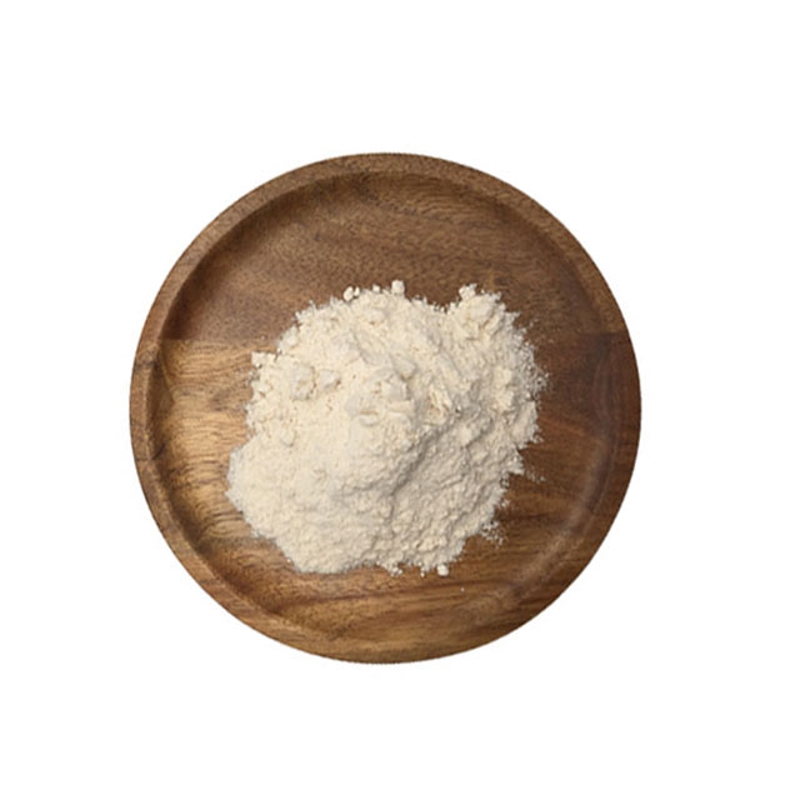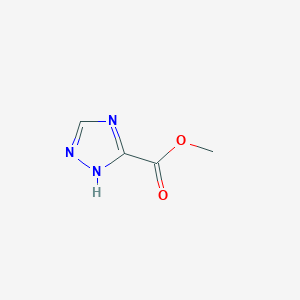Huang Yanzhong: rules of the game for Chinese pharmaceutical industry or changing global health
-
Last Update: 2015-04-15
-
Source: Internet
-
Author: User
Search more information of high quality chemicals, good prices and reliable suppliers, visit
www.echemi.com
Source: China and globalization think tank on April 15, 2015 in the 21st century, the transfer of geo economic forces to Asia has also driven the rebalancing of global pharmaceutical R & D investment to new economies China currently has the second largest overall R & D investment in the world and is expected to surpass the United States in 2023 China invested 7.28 billion yuan in 2012 to promote the development of life and medical science, almost ten times that of 2004 This shows China's determination to become a global leader in the pharmaceutical industry With the annual growth rate of US funding for medical research declining, the surge of Chinese investment in this area has led many policy makers to believe that China's pharmaceutical industry will become the next game changer in the field of global public health and drug access (ATM) The prosperity of China's pharmaceutical industry in the Mao Zedong era (1949-76), China's weak R & D capacity and decades of closed self-defense hindered its pharmaceutical industry to make a direct and substantial contribution to global health For example, even though Chinese scientists discovered artemisinin based antimalarial therapy as early as the 1970s (currently recognized as the most effective antimalarial drug), it was not until the 1990s that these drugs were sold to other countries through multinational pharmaceutical companies such as Novartis and Sanofi The economic reform carried out in the late 1970s provided new opportunities for the development of Chinese pharmaceutical industry Due to the huge income generating potential of the pharmaceutical industry, the government actively cultivates the industry to seek economic growth Between 1980 and 1999, the number of pharmaceutical companies increased nearly tenfold, from 680 to 6357 In the 1990s, China has established a relatively complete pharmaceutical industry With the blooming of pharmaceutical enterprises, the state began to seriously try to standardize management and eliminate unqualified manufacturers As of May 2005, nearly 4000 Chinese pharmaceutical enterprises have obtained GMP certification At the same time, with the promotion of government departments, major pharmaceutical enterprises in China began to establish subsidiaries and local sales channels overseas, and played an active role in foreign health development assistance In 2011, China clearly proposed to develop its life science and pharmaceutical industry From 2011 to 2015, the state invested a total of US $1.1 billion in new drug development China's ambition to become a global player in the pharmaceutical industry has also been supported by an increasing number of returnees who have received health and life science education abroad For example, 40% of the overseas returnees introduced by Beijing municipal government from 2009 to 2012 have biomedical professional background Impact on global health China's progress in the pharmaceutical sector has a profound impact on global health, especially in improving access to affordable life-saving drugs With an annual output of 800000 tons of APIs, China became the world's largest producer and exporter of APIs in 2012 Its ability to produce and supply APIs is critical to the global generic market, to the production of formula drugs in new economies such as India, and to developed countries APIs from China are also indispensable in the fight against major infectious diseases, including malaria and avian influenza Until recently, China has been a major supplier of shikimic acid, the basic ingredient of Tamiflu, an anti influenza drug However, the leaders of Chinese pharmaceutical industry are not satisfied with only playing the role of API supplier China's low-cost skilled labor force has greatly increased the number of contract research organizations (CRO) providing research support for the pharmaceutical, biotechnology and medical equipment industries At present, there are about 300 cros providing preclinical and clinical research to multinational pharmaceutical companies in China These cros show China's innovation potential in drug research and development The most famous of these is Wuxi apptec, which has more chemists than any cro in the world China has also made some progress in developing new drug products Since 1986, China has independently developed about 40 kinds of chemical drugs, including bicyclol (used to treat chronic viral hepatitis B and C), dl-3-n-butylphthalide (used to treat ischemic stroke), and glycididazole sodium (used to treat NPC) In 2003, the State Food and Drug Administration approved the anticancer drug gene, which is the first gene therapy product approved for human clinical use Participation in international health science and technology cooperation has further enhanced China's ability to promote the development of global health In October 2013, the Japanese encephalitis vaccine developed by Chengdu Institute of biological products of China was pre certified by the World Health Organization The development of this JE vaccine has obtained technical support from path, an international non-governmental organization It is the first single dose JE vaccine approved by who for children It is also remarkable that in the outbreak of Ebola in 2014, China announced the successful development of its first drug for the treatment of Ebola The challenges facing China's pharmaceutical industry despite its impressive growth, China's role in the production and supply of APIs, and the fact that China's cro's service targets are mainly multinational pharmaceutical companies remind us that China's pharmaceutical industry is still at the low end of the global value chain In addition, there are few new drugs or vaccines independently developed by China and internationally known and marketable According to the China food and drug administration, more than 95% of domestic chemicals are generic Many so-called "independent innovation" drugs are more like generic drugs from a clinical point of view For example, the highly praised anticancer drug Kemena has the same mechanism of action as the other two imported drugs that have been sold in the market, and there is no real difference in effectiveness and safety And even with its huge generic industry, China still lags behind emerging economies such as India in providing drugs to developing countries So far, only a few Chinese pharmaceutical companies have obtained the GMP certification of who, and few Chinese pharmaceutical companies have obtained the pre certification of who products and supplied to international organizations and donor funds This also explains why only 18 drugs in China are included in the list of pre certified medicines by who, while 355 drugs in India China's pharmaceutical industry is also facing some institutional, policy and capacity related challenges in order to realize its potential Product safety is still a problem In order to show its determination to fight corruption in the pharmaceutical industry, China executed its former head of the drug administration in 2007, because he received nearly $850000 in bribes to get substandard drugs approved for marketing Five years later, another senior FDA official was jailed for demanding bribes from pharmaceutical companies At the same time, innovative enterprises have to face a social and political system that supports media censorship, ignores intellectual property rights, and suppresses curiosity and creativity This may explain why, despite the huge scale of China's drug exports (with an annual average of US $67 billion), few of this revenue comes from truly innovative products Second, industrial policies supporting the pharmaceutical industry are not yet in line with other public policy objectives In order to stimulate the research and development of original drugs, the market and the state should give those enterprises that produce truly innovative products a profit margin significantly higher than their counterparts that produce generic drugs But this conflicts with the goal of government to guarantee affordable medical services Since 1998, the national development and Reform Commission has reduced drug prices more than 30 times The country has unwittingly become a sponsor of the pharmaceutical industry that produces cheap generic essential drugs to meet domestic demand, which in turn directly hurts the local patent drug market Third, the current industrial policies have constrained China's ability to effectively promote new drug exploration and innovation In the new subject of "major new drug creation" in 2015, most of the drugs and biological products listed in it are being researched and developed by multinational pharmaceutical companies A new drug will take about 18 months to be reviewed in China, and it will take 11 months for a drug selected as a priority to complete the process In contrast, the U.S Food and Drug Administration usually takes only ten months to review new drugs and six months to review priority drugs In other words, when a Chinese "new" drug is developed, similar products of multinational pharmaceutical companies may have been patented and sold in China Finally, although China's R & D capacity in the pharmaceutical sector continues to increase, it still lags behind multinational pharmaceutical companies In 2013, four multinational pharmaceutical companies (Roche, Novartis, Johnson & Johnson, and Merck) spent more than 10% of their annual revenue on R & D By contrast, the investment of major pharmaceutical companies in China is less than 2% on average According to reports, the total R & D investment of 36 Chinese vaccine enterprises cannot compete with any of the five major multinational pharmaceutical enterprises (Sanofi, GlaxoSmithKline, Merck, Novartis and Pfizer) The gap is narrowing but far from closing In the past decade, rising China is facing increasing international pressure to take more responsibility in global health China's growing investment in research and development in life and Health Sciences, as well as its efforts to enter the global drug market, have further raised this expectation Although China has made great progress in promoting the global drug supply chain and ATM, some institutional, policy and R & D capacity factors still seriously restrict the country to become a real innovator in the pharmaceutical industry relying on the existing success Due to the lack of fundamental changes in government governance, industrial policies and R & D capabilities, it is too early to call China's pharmaceutical industry a global healthy game changer Huang Yanzhong, senior researcher of global health of the Council on foreign relations of the United States, member of the academic Expert Committee of China and globalization think tank (CCG).
This article is an English version of an article which is originally in the Chinese language on echemi.com and is provided for information purposes only.
This website makes no representation or warranty of any kind, either expressed or implied, as to the accuracy, completeness ownership or reliability of
the article or any translations thereof. If you have any concerns or complaints relating to the article, please send an email, providing a detailed
description of the concern or complaint, to
service@echemi.com. A staff member will contact you within 5 working days. Once verified, infringing content
will be removed immediately.







